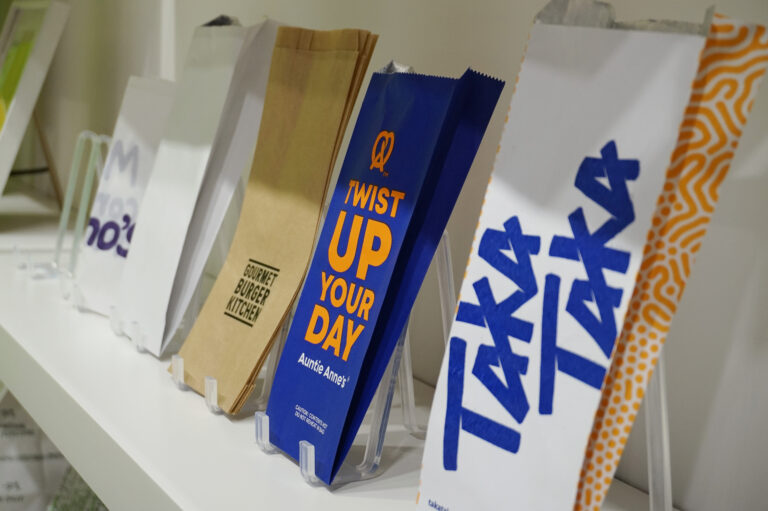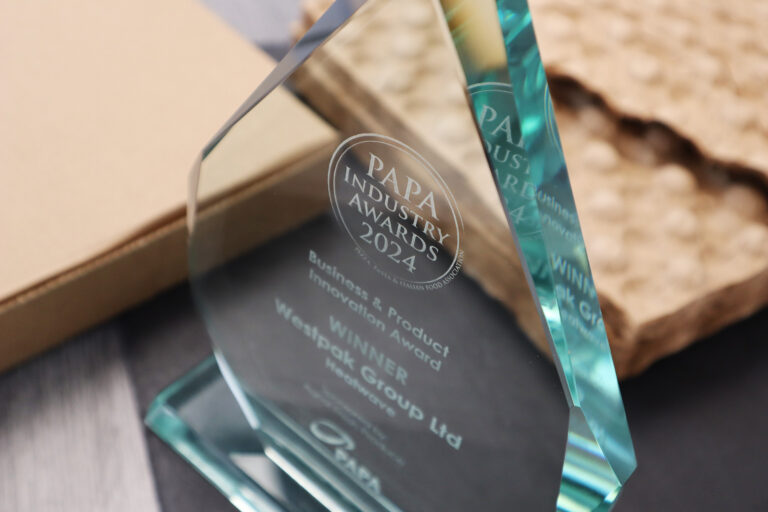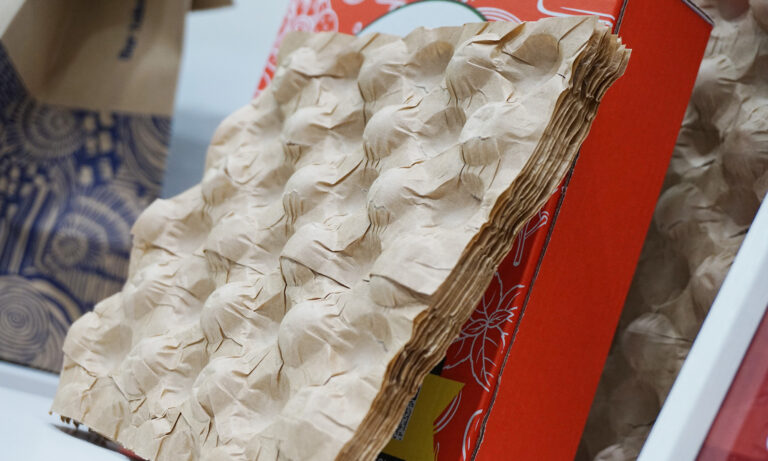Card-based packaging is more popular with consumers than ever before. This is undoubtedly driven by a strong desire from consumers for packaging that offers enhanced environmental sustainability. Card-based packaging communicates clear sustainability advantages including the use of renewable resources as well as clear and widespread recycling compatibility. The range of card-packaging options is, however surprisingly vast, with numerous material types – each with their own strengths and ideal applications. From fluting thickness categorisations in corrugated card, to the need to remove lignin from Kraft paper, we’ve highlighted some of the key defining characteristics of each major card-based packaging material currently utilised in the grocery and foodservice markets.
Corrugated Cardboard
Corrugated cardboard is one of the world’s most popular and widely utilised packaging materials. The material (also commonly called ‘corrugated fibreboard’) is comprised of a ‘fluted’ inner layer, held in place between two ‘liner’ layers. This construction design provides strength and impact-resistance, protecting the goods inside. The material is produced on vast production lines by machines called ‘corrugators’. The finished product can be differentiated by a variety of factors including flute size, strength rating etc.
Did you know?
With a recycling rate of more than 80%, corrugated cardboard has the best recycling rate of any packaging material in the UK (source).
Sustainability stats
Recyclable: Yes
Compostable: Yes (Industrial)
Biodegradable: Yes
Recycled Content: Typically approximately 20-30%
OPRL Label: Recycle
Featured products
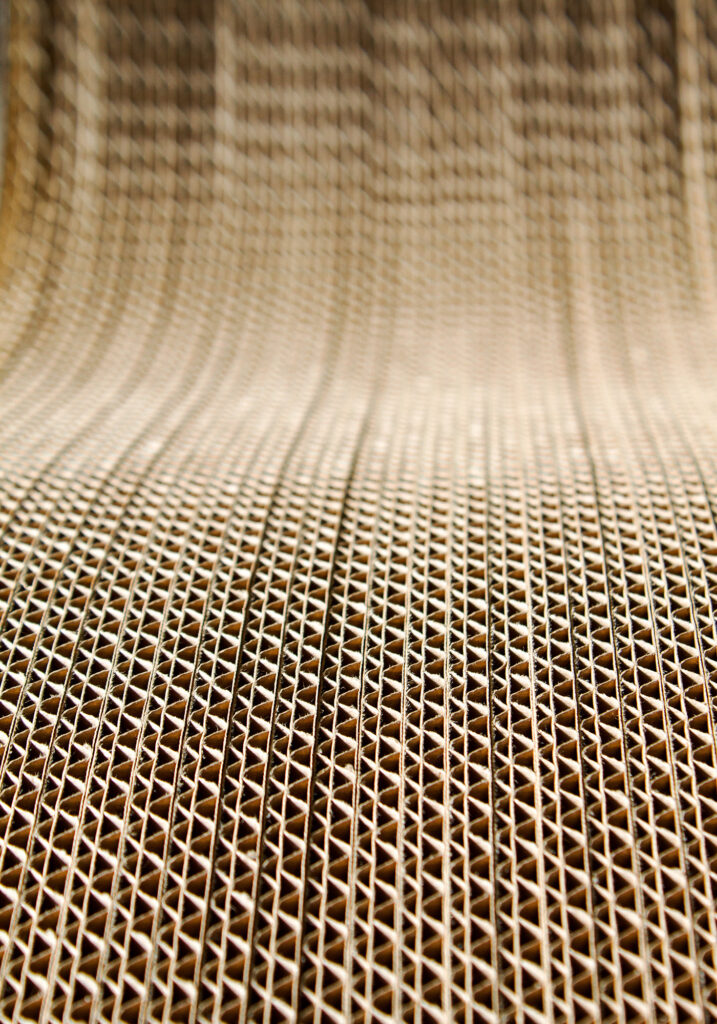
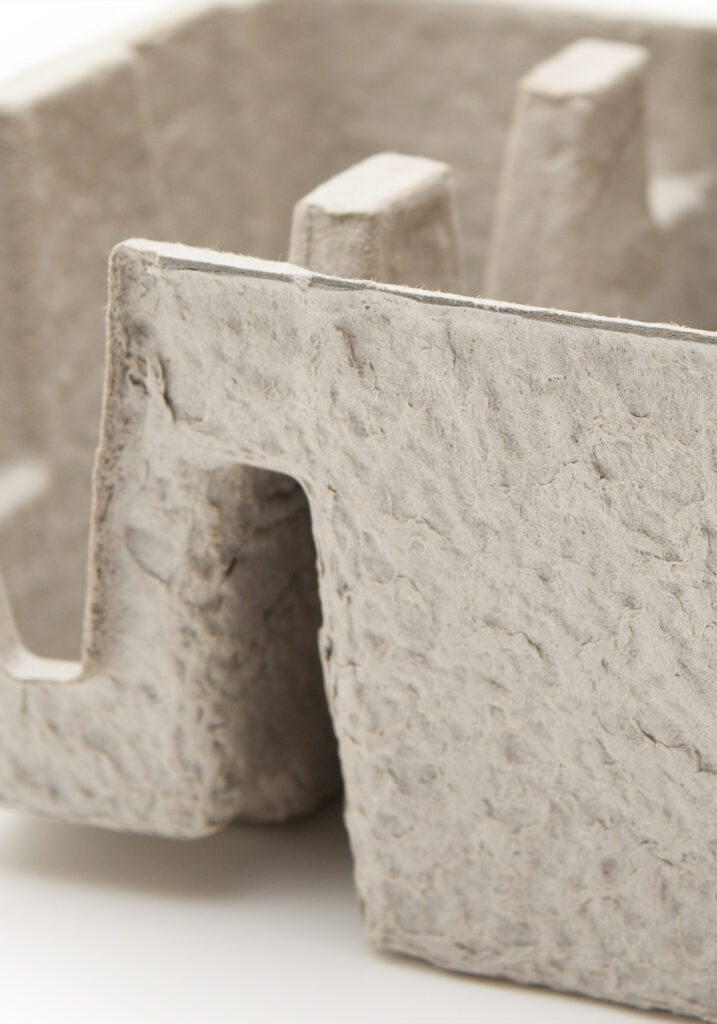
Moulded Fibre
Moulded fibre, also referred to as ‘pulp paper’ or ‘moulded pulp’, is a packaging material that reduces the demand for virgin materials by utilising recycled paper waste (and commonly newsprint) as well as renewable fibres such as bamboo, sugarcane, or wheat straw. The process involves soaking these materials in water before moulding and compressing them into the desired forms. There are various types of moulded fibre packaging including ‘thick wall’, ‘transfer moulded’, ‘thermoformed fibre’ and ‘processed’ specifications, each with their own precise production approaches and typically suited product uses. Moulded fibre boasts a range of advantages including being lightweight, heat resistant and able to absorb impact and vibrations.
Did you know?
Packaging made of molded fiber pulp reduces vibration three times more effective than that of expanded polystyrene (EPS) (source).
Sustainability stats
Recyclable: Yes
Compostable: Yes (Industrial)
Biodegradable: Yes
Recycled Content: 100%
OPRL Label: Recycle
Featured products
Cartonboard
Cartonboard is made from multiple layers of cellulose fibres. Typically, approximately half the fibres originate from trees with the other half from waste paper. The manufacturing process sees multiple layers of these fibres combined in a wet state before being pressed into shape. This multi-layered approach is the key distinction between cartonboard and the less robust ‘paperboard’. There are distinct types of cartonboard relating to the manufacturing process including ‘Solid Bleached Board’, ‘Solid Unbleached Board’, ‘Folding Boxboard’ and ‘White Lined Chipboard’. It is common for the top layer of cartonboard to have a smooth, white finish, making it ideal for commercial printing.
Did you know?
Global cartonboard consumption was estimated at 53 million tons in 2021 (source).
Sustainability stats
Recyclable: Yes
Compostable: Yes (Industrial)
Biodegradable: Yes
Recycled Content: 0%
OPRL Label: Recycle
Featured products
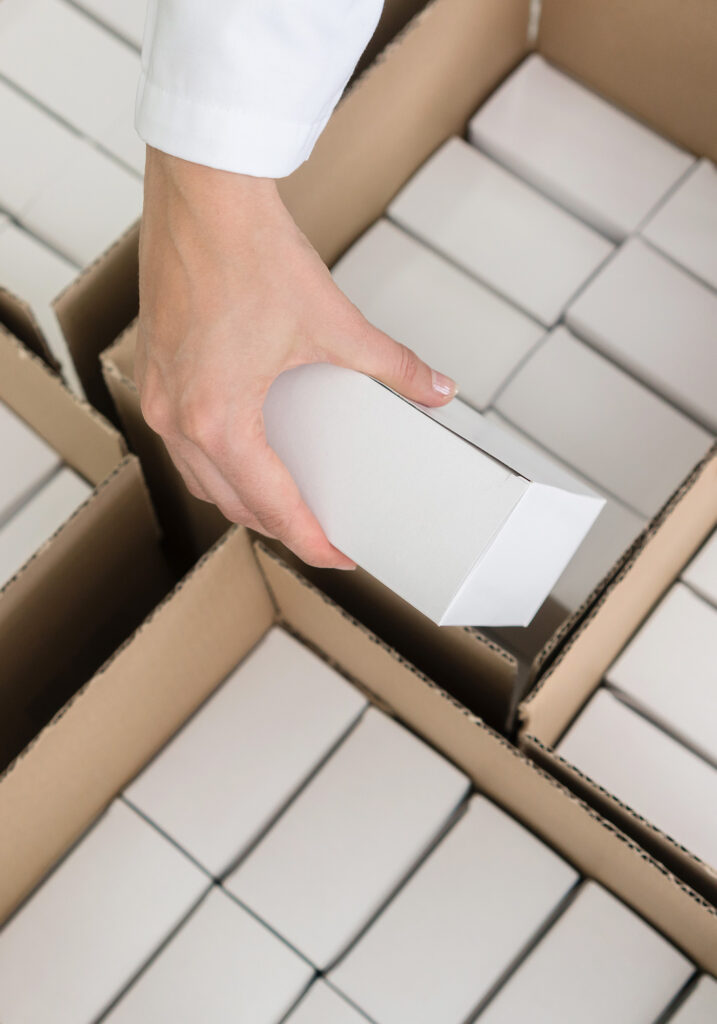
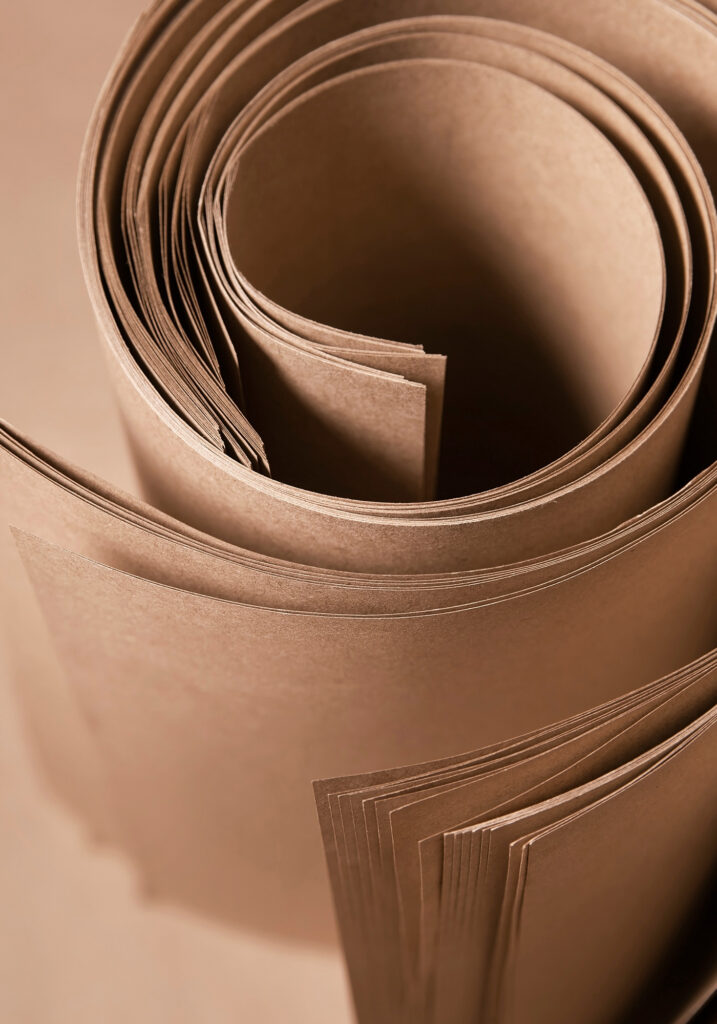
Kraft
Kraft, or sometimes called ‘Kraft paper’ or ‘Sack kraft paper’, is a paper-based material typically made from wood chips. The term ‘Kraft’ is derived from the manufacturing process, whereby wood chips are heated and pressurised with alkaline chemicals. A vital stage sees the removal of lignin from the wood fibres – essential in giving Kraft paper is renowned strength. The term ‘Kraft’ is also commonly used as a colour reference for the neural wood tones in the finished product. However, Kraft paper can also be bleached to provide white paper that still retains an impressive level of strength. Kraft paper is known for being widely recyclable but various additional coatings can limit this.
Did you know?
Printed branding on Kraft paper often utilises dark colours and simple designs to stand out against the natural wood paper colouring.
Sustainability stats
Recyclable: Yes
Compostable: Yes (Industrial)
Biodegradable:
Recycled Content: 0%
OPRL Label: Recycle
Featured products
Microflute
Microflute is a category of corrugated card that is significantly thinner than conventional corrugated cardboard. ‘Microflute’ categorisation centres around the flute type of the card – which relates to the inner concertinaed layer. Different flute thicknesses carry different flute ratings, with microflute typically assigned to ‘F-Flute’ and ‘N-Flute’ profiles (which carry thicknesses of 0.8mm and 0.5mm respectively). However, the thickness parameters for microflute categorisation can vary from one resource to another. Microflute offers numerous benefits relating to its lightweight design, reduced resource consumption and reduced transport and storage requirements.
Did you know?
Our microflute 750ml ‘Crave’ box (windowless) typically weights 27% less than an equivalent capacity plastic container.
Sustainability stats
Recyclable: Yes
Compostable: Yes (Industrial)
Biodegradable: Yes
Recycled Content: Ranges from 0% to approximately 60%.
OPRL Label: Recycle
Featured products
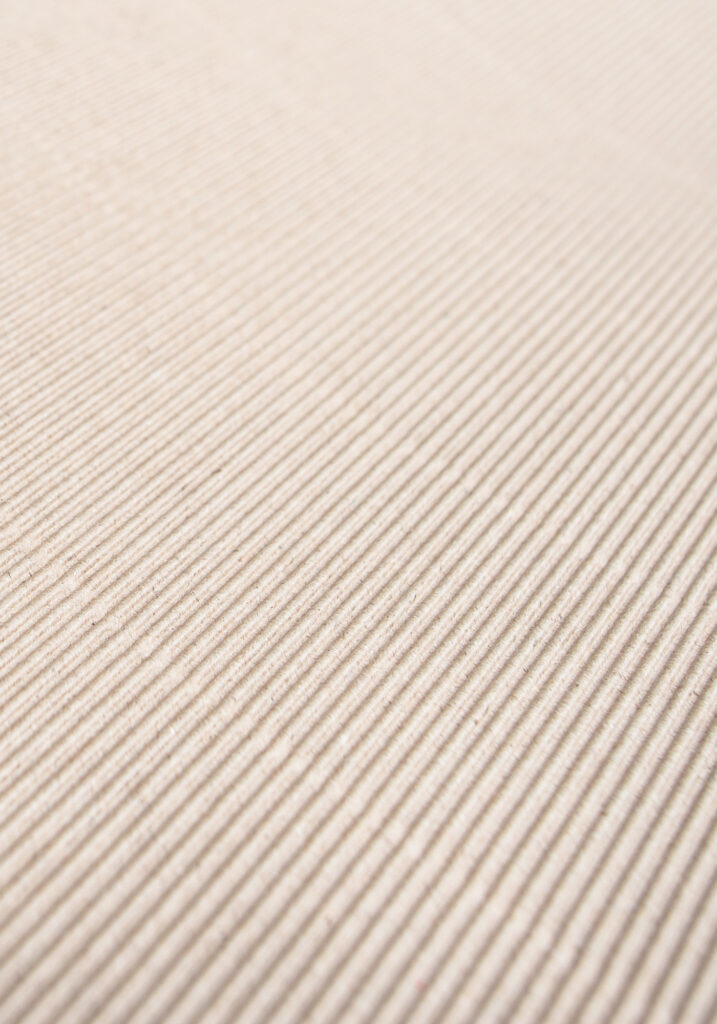
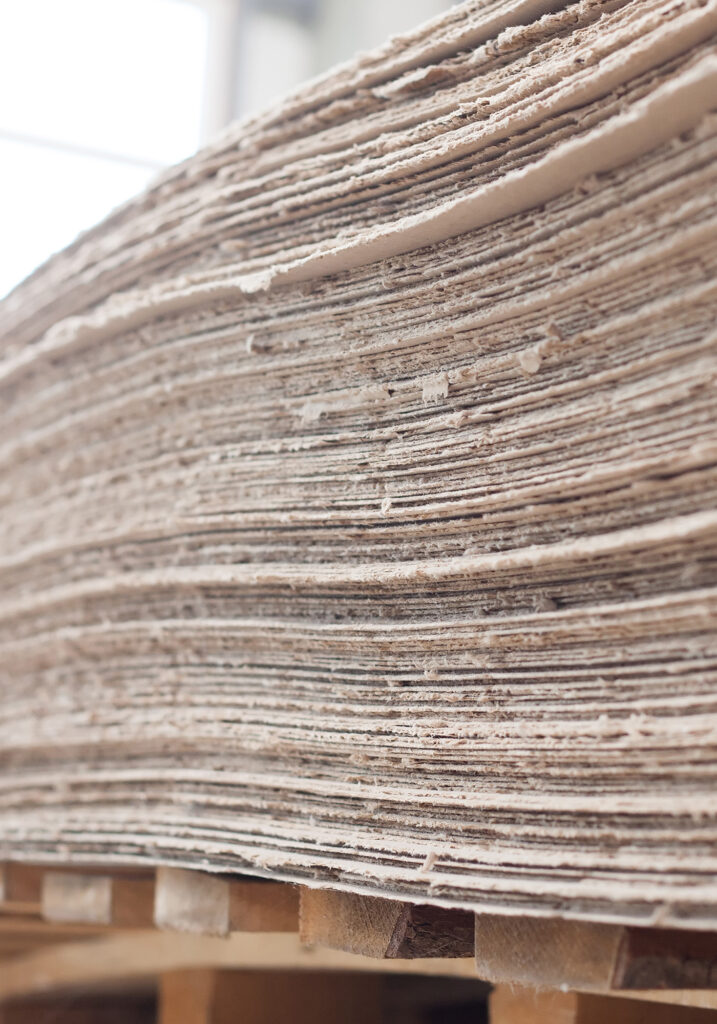
Recycled Paper
Recycled paper and card are widespread in their prevalence and applications across the packaging industry and beyond. Recycling paper carries a range of major benefits including diverting materials from landfill and well as reducing emissions in contrast with incineration. Recycling paper is a complex process that involves sorting paper and card, pulping with water and various chemicals and removing contaminants such as glue, ink and staples. The material is eventually pressed, rolled and heated to form new paper. Recycled paper can be found within our grocery packaging range with products such as our Globular Embossed Strawpaper – available in various size options.
Did you know?
In the UK, “we get through 12 million tonnes of paper each year and the average family in the UK throws away six trees worth of paper every year” (source).
Sustainability stats
Recyclable: Yes
Compostable: Yes (Industrial)
Biodegradable: Yes
Recycled Content: 100%
OPRL Label: Recycle
Featured products
Sustainably Sourced Paper
Sustainable forest management looks to balance various considerations and interests with regard to the use of forests as a valuable resource. This may include replanting trees in place where established trees have been cut down, protecting biodiversity and many other factors. Paper and wood as resources can be sourced from sustainable forests to support this process. Responsibly sourced wood, paper, and other similar products often feature the FSC (Forest Stewardship Council) certification. The Forest Stewardship Council represents more than 150 million certified hectares of forest and licenses more than 1,600 companies to promote FSC-labeled products. Consumers have become very aware of environmental protection and the sustainable sourcing of materials. This is particularly the case with regard to forests as trees are such a vital resource in the fight against continued climate change.
Did you know?
46% of consumers globally recognise the FSC label (source).
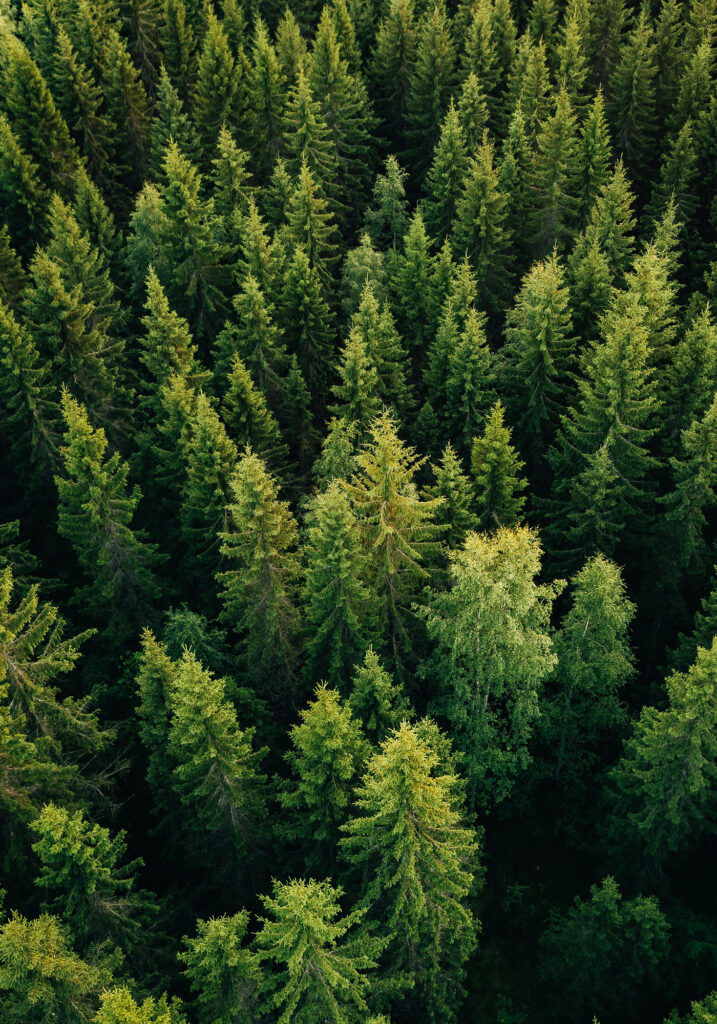
We carefully assess the materials used for each packaging product we introduce. When introducing new lines to our standardised grocery and foodservice ranges, we identify the distinct advantages of each card-based material option. When introducing bespoke packaging products, we also work with clients to assess how their sustainability objectives and other criteria may influence the material options utilised. For example, an emphasis on logistical efficiency may lean towards cartonboard, whereas a drive to lower carbon footprints may point to moulded fibre as the most suitable option. We can work with you to uncover the ideal material options for your packaging needs, be that card-based or alternative resources.
